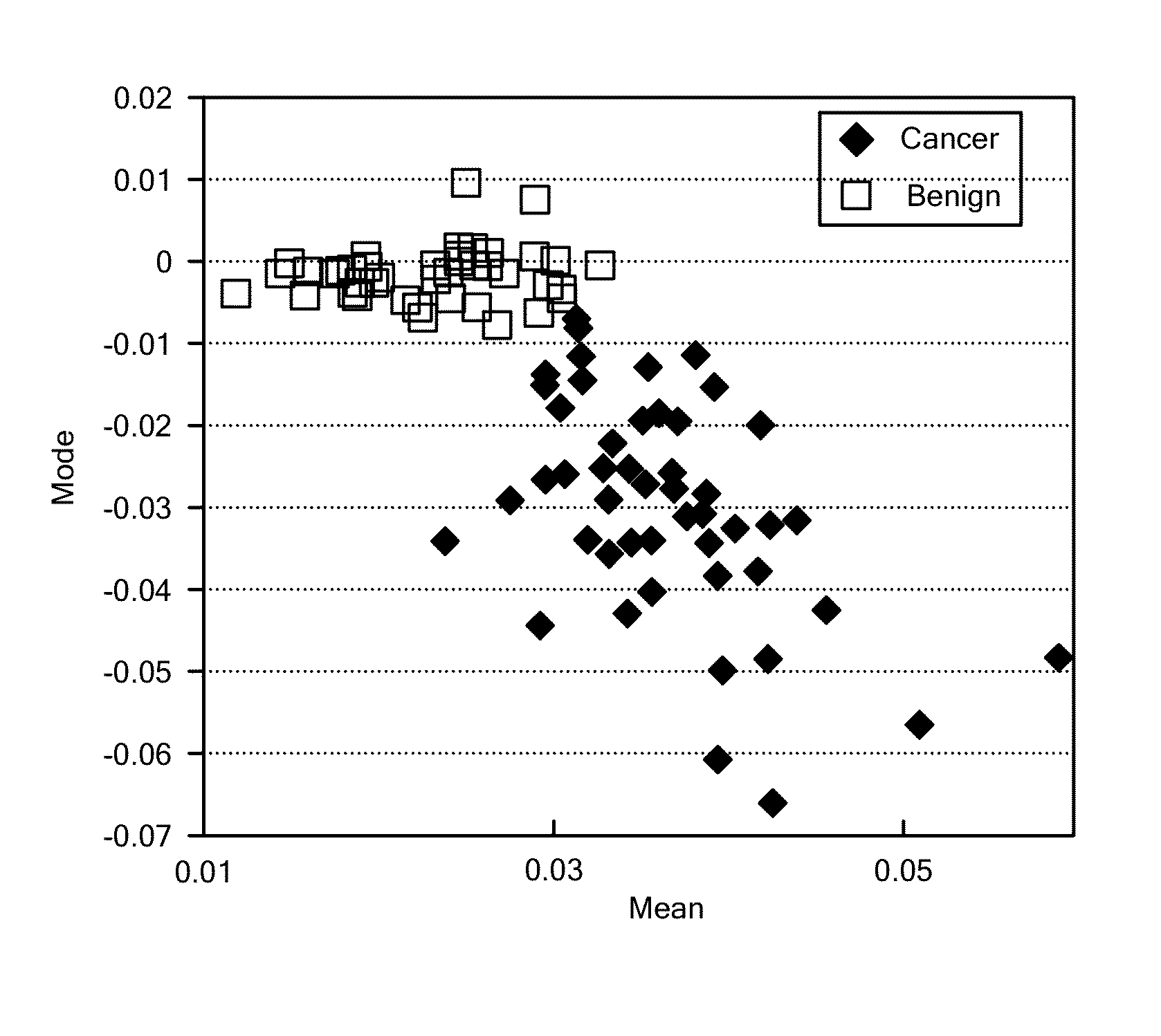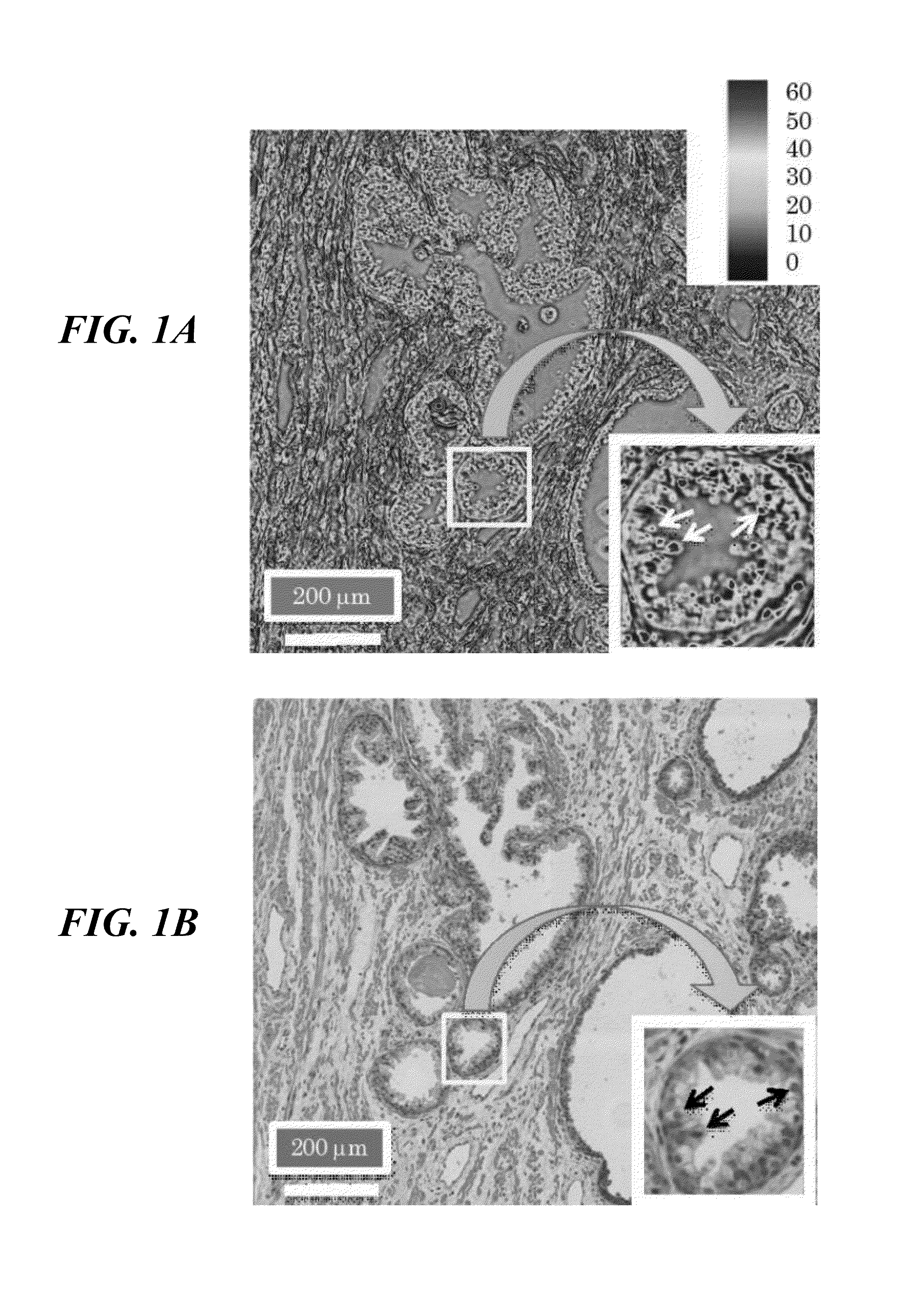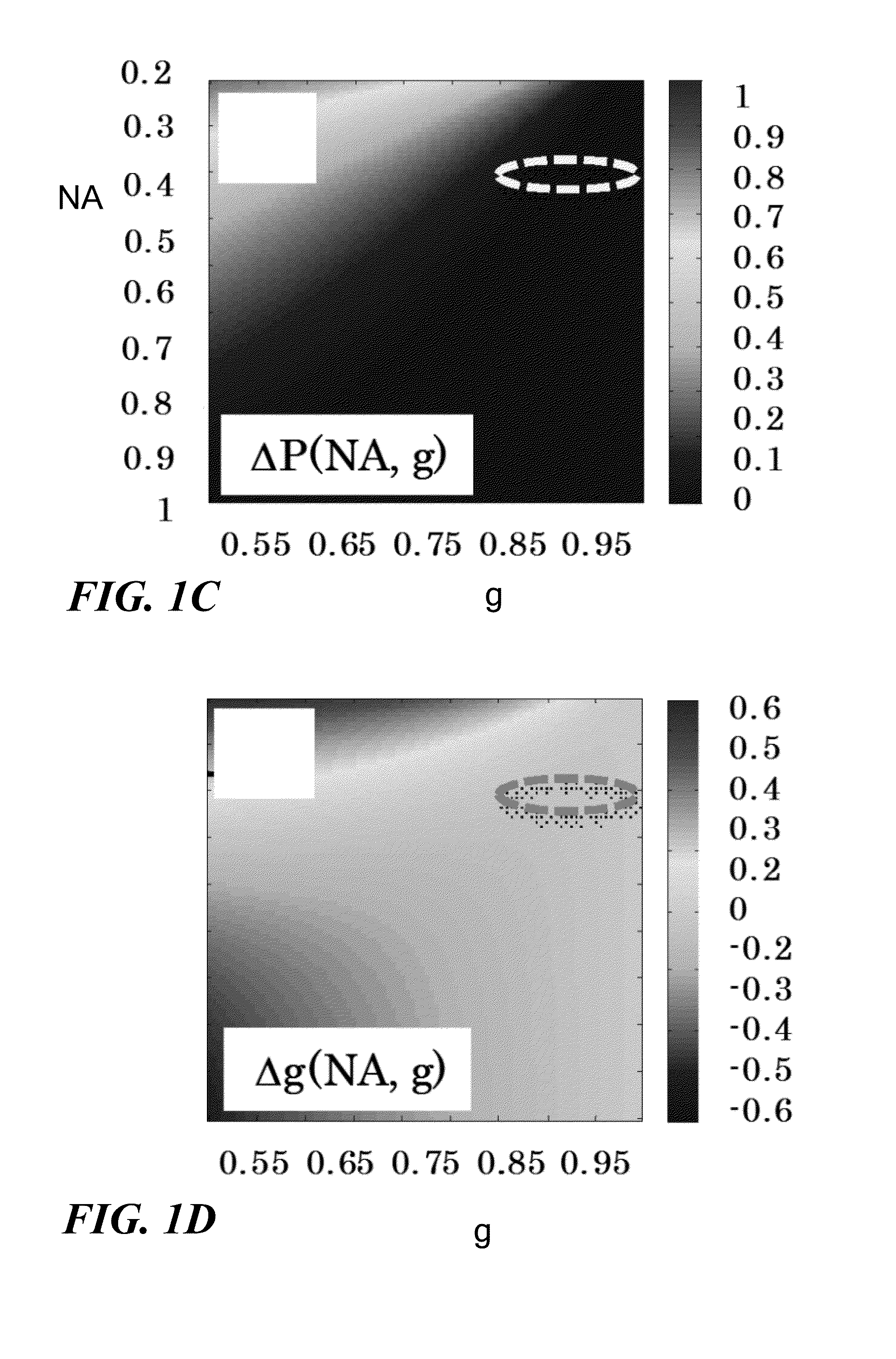Characteristic parameters of cells and tissue from quantitative phase imaging
a quantitative phase and cell technology, applied in the field of characteristic parameters of cells and tissues from quantitative phase imaging, can solve the problems of anisotropy factor g, direct measurement, and extremely difficult, and achieve the effect of reducing the number and improving the quality of spherical scattering parameters
- Summary
- Abstract
- Description
- Claims
- Application Information
AI Technical Summary
Benefits of technology
Problems solved by technology
Method used
Image
Examples
example i
[0036]In an example of the application of the present invention, two adjacent 4 μm-thick tissue biopsies, one unstained and one stained by hematoxylin and eosin stain (H&E) were imaged by SLIM and in a bright field microscope, respectively. FIGS. 1A-1D illustrate the ability of SLIM to render high transverse resolution, high phase sensitivity images of thin tissue slices. The phase information provided by SLIM is inherently averaged over the optical frequencies, as discussed by Wang, et al., Appl. Phys. Lett., vol. 96, 051117 (2010), which is incorporated herein by reference. Thus, the scattering parameters obtained by this method will also be frequency-averaged. Throughout the experiments discussed here in the context of the present application, a 10×, 0.3 NA objective was used. This limited numerical aperture effectively acts as a low-pass spatial frequency filter.
[0037]The spatial averages performed in deriving equations 1a-b are expected to be affected by this cut-off of the lim...
example ii
[0041]In a further example of the application of the present invention, quantitative phase images associated with 5-1 μm thick tissue slices from rat organs were acquired. The tissue was sliced frozen but thawed before imaging. Three slices from each organ of the same rat were cut in succession and imaged by SLIM. The field of view of the microscope was 0.4×0.3 mm2. In order to image the cross-section of the entire organ, the specimen was translated and a mosaic of quantitative phase images was acquired and numerically collaged together. Single quantitative phase images made of hundreds of individual SLIM images were obtained. Note that these quantitative phase images cover the entire cross section of a rat organ, with a resolution of ˜λ / 2NA=0.9 μm. FIG. 2A shows one example of quantitative phase image of a tissue slice cut from a three month old rat liver.
[0042]Following Eq. 1, ls and g were calculated in windows of 9×9 μm2 across the entire tissue slice. FIGS. 2B and 2C show maps ...
example iii
Refractive Index Signatures at the Cellular Scale
[0047]Both SLIM and stained tissue images were obtained using a 10× (NA=0.3) objective, which captures multiscale information down to subcellular structures. FIGS. 4A-4G illustrate the ability of SLIM to reveal particular cell types based on their refractive index signatures. Due to their discoid shape and high refractive index, red blood cells are easily identifiable in the SLIM images (FIGS. 4A-4B). Lymphocytes, as evidenced by dark staining in H&E (FIG. 4D), were found to exhibit high refractive index in SLIM images (FIG. 4C). The lymphocytes were confirmed by utilizing immunohistochemical stain, namely Leuckocyte Common Antigen (CD45) (FIG. 4E). In a different area of the tissue, a particular type of cell was that seems unlike the rest: while their refractive index is distinctly high, they are sparsely distributed within the tissue (FIG. 4F). In H&E, they appear as black dots. Due to their negative immunostaining for epithelial, m...
PUM
| Property | Measurement | Unit |
|---|---|---|
| path-length | aaaaa | aaaaa |
| path-length | aaaaa | aaaaa |
| path-length | aaaaa | aaaaa |
Abstract
Description
Claims
Application Information
 Login to View More
Login to View More - R&D
- Intellectual Property
- Life Sciences
- Materials
- Tech Scout
- Unparalleled Data Quality
- Higher Quality Content
- 60% Fewer Hallucinations
Browse by: Latest US Patents, China's latest patents, Technical Efficacy Thesaurus, Application Domain, Technology Topic, Popular Technical Reports.
© 2025 PatSnap. All rights reserved.Legal|Privacy policy|Modern Slavery Act Transparency Statement|Sitemap|About US| Contact US: help@patsnap.com



